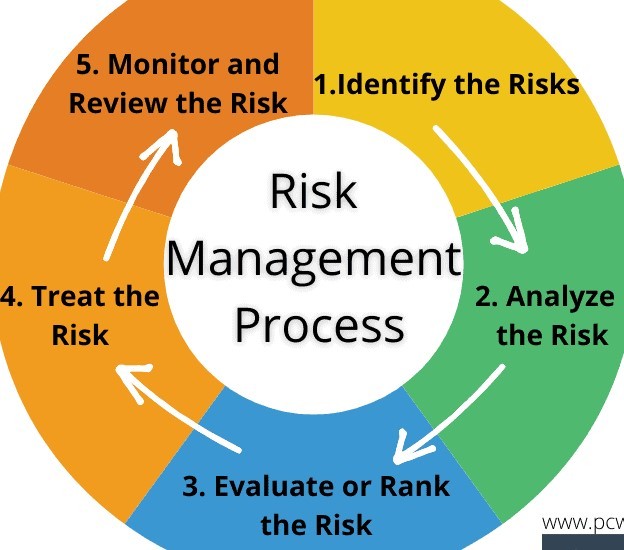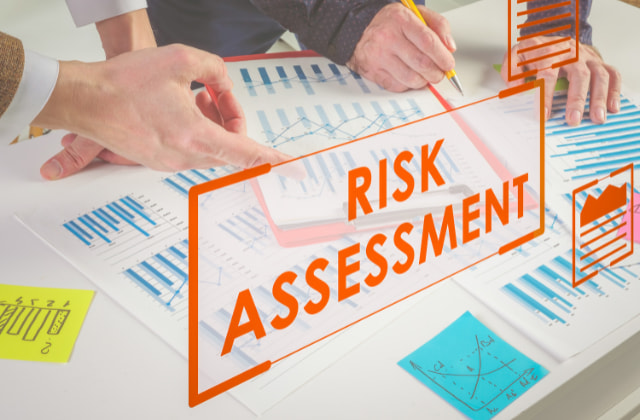The Critical Relevance of Risk Management in Achieving Organizational Objectives
This is where Risk Management actions in, providing a structured technique to determining, examining, and mitigating potential obstructions to progress. As we explore the vital function of Risk Management in accomplishing organizational objectives, one can't wonder but aid: exactly how does this convert into real-world success?
Understanding the Idea of Risk Management in Service

The Integral Function of Risk Management in Strategic Planning
Incorporating Risk Management right into tactical planning acts as a protect for organizations, securing their long-term strategies with a solid structure of readiness and durability. Risk Management supplies a framework for anticipating unpredictabilities and creating appropriate responses, guaranteeing the company's survival and success even in the face of difficulty. By integrating Risk Management into critical planning, organizations can transform these unpredictabilities into opportunities for development and advancement.

Techniques for Identifying, Assessing, and Focusing On Dangers
The procedure starts with Risk identification, employing tools such as SWOT evaluation, which aids in determining potential risks and chances. Next off, Risk analysis is performed to ascertain the potential effect and probability of each Risk. Threats are focused on based on their possible impact and probability, allowing organizations to focus their sources on critical threats.
Protecting Business Operations With Reliable Risk Management
In the organization landscape fraught with uncertainties, reliable Risk Management plays a pivotal function in protecting business procedures. It serves as a protective shield, reducing the adverse effects of possible threats and making certain the smooth performance of all procedures. By determining and examining possible dangers, Risk Management enables organizations to establish durable contingency plans. This preventative technique aids in keeping functional stability, also when faced with unexpected scenarios. Fundamentally, Risk Management is the lifeline that keeps the organizational procedures afloat in the middle of turbulent waters. It ensures not just the survival however the sustainable growth of a company, making it Click Here a crucial tool in achieving organization purposes. Organizations have to invest in thorough Risk Management methods to safeguard their operations.

Transforming Prospective Threats to Opportunities: The Power of Risk Management
While prospective threats may initially look like roadblocks to organizational success, reliable Risk Management can transform them into chances. A positive approach to risk Management involves recognizing, examining, and prioritizing dangers to design techniques that turn them right into potential benefits. This process demands the growth of a risk-aware culture within the organization, motivating people to watch risks as potential stimulants for modification and development, instead of simple risks. importance of risk management. With this lens, prospective hazards come to be chances to innovate, enhance procedures, and strengthen strength. Thus, by leveraging the power of Risk Management, organizations can not visit the website just protect their procedures yet additionally spur growth and achieve their objectives in an uncertain business environment.
Case Studies: Success Stories of Risk Management Driving Company Objectives
Effective application of Risk Management techniques has produced remarkable cause different businesses, underscoring the values of this technique. International companies like Microsoft and Google, for example, have actually leveraged Risk Management to minimize risks and make use of possibilities, driving their service goals forward. Microsoft's proactive Risk Management method helped it pivot swiftly throughout the 2020 pandemic, transitioning to remote work efficiently, therefore keeping efficiency. Google, by assessing and mitigating possible threats in its cloud-based services, other has made certain undisturbed solution, thereby strengthening client trust. These examples show just how effective Risk Management can not just guide services clear of prospective risks but additionally direct them in the direction of their calculated goals. Hence, Risk Management is indispensable to the pursuit of organizational goals.
Verdict
In final thought, Risk Management is basically important in attaining organizational objectives. By incorporating Risk Management into tactical preparation, organizations can better browse unpredictabilities, safeguard operations, and capitalise on chances, thus straightening with long-lasting objectives.
At its core, Risk Management is the process of identifying, evaluating, and dealing with possible hazards that could adversely influence an organization's operations or objectives. Next, Risk analysis is performed to establish the potential impact and chance of each Risk. Risks are prioritized based on their possible influence and possibility, enabling organizations to concentrate their sources on high-priority dangers. By determining and analyzing potential hazards, Risk Management enables companies to establish durable contingency plans. A positive method to risk Management involves recognizing, evaluating, and prioritizing dangers to devise approaches that turn them right into prospective advantages.